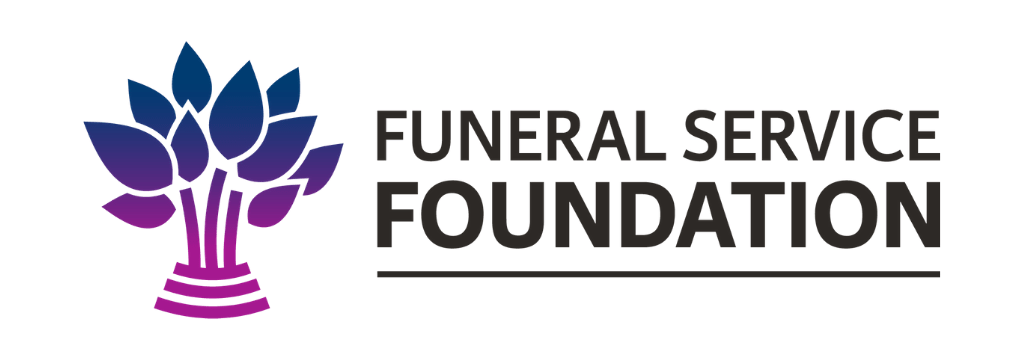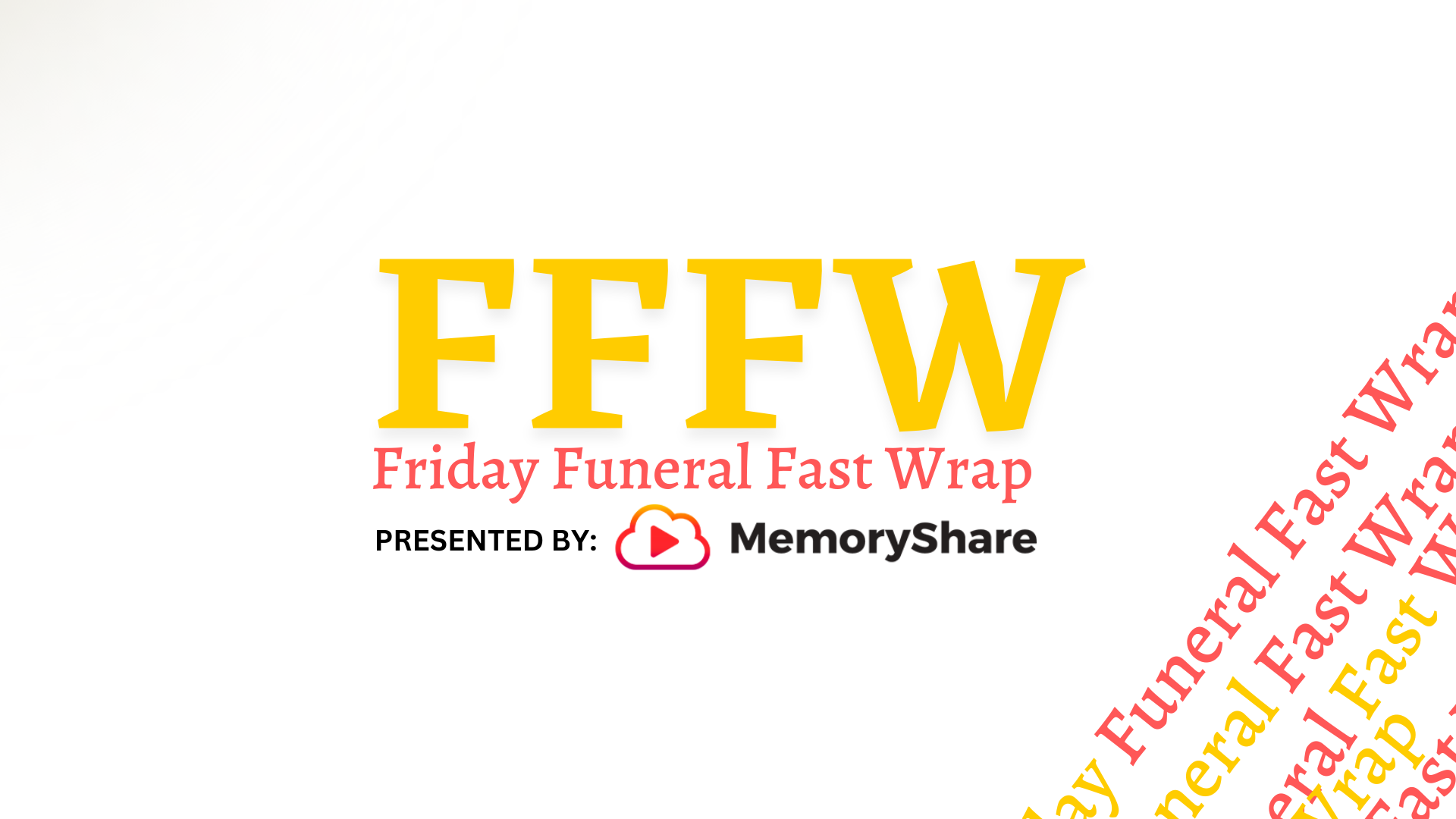6 Takeaways from NFDA’s Consumer Awareness and Preferences Study
The National Funeral Directors Association recently released their 2017 Consumer Awareness and Preferences Study. According to NFDA’s website, the survey is emailed to a panel of adults over the age of 40; 1,013 individuals completed the survey this year.
Participants are asked questions regarding their interest in different aspects of funerals. This survey is a preparatory tool for funeral homes to see what direction the business will be headed within the coming years. The survey revealed that 34.5% of respondents indicated that they are extremely interested or very interested in having a therapy dog present during a memorial or funeral service. Another interesting statistic is 53.8% of participants said they would be interested in exploring green memorialization options to reduce the environmental impact of end-of-life rituals.
These are both great to keep in mind when looking to the future in seeing how to grow the funeral business, but there is one statistic that stuck out the most. The NFDA concluded that only 18.9% of respondents contacted more than one funeral home in their time of need, and of that 18.9%, 52.3% contacted multiple funeral homes in order to compare prices.
This statistic is quite revealing in the fact that it shows that many consumers already know what funeral home they will be using in their time of need; they aren’t actively seeking a funeral home. This brings forth a significant amount of pressure and questions. The pressure derives from the high-level of competition within this market and questions about how to reach maximum potential begin to develop.
Aside from ConnectingDirectors.com, Ryan Thogmartin is also the CEO of DISRUPT Media. DISRUPT is a social media content agency that focuses on storytelling for funeral companies. Ryan was able to offer his thoughts and advice on this pressing issue.
[ConnectingDirectors.com (CD)] Why do you think consumers stop looking after just one visit to a website? Are they satisfied with the pricing or is it too much work?
[Ryan] “Transparency. If they already trust the brand, going to that website solidifies what they need and if that website has pricing on it that’s the ultimate transparency that I think can stop consumers from going elsewhere. This isn’t something someone wants to spend all day doing.
I don’t think consumers are satisfied with pricing because there’s a lot of misconception of the pricing of funerals. Some consumers think that funerals cost well over $10,000, so if they find the price of $3,000 they are extremely happy. Others think that funerals should only cost $2,000 and when they see $4,000 then they are unsatisfied. So I think it’s a balance; I think consumers want more transparency with funeral homes. There aren’t a lot of services that you cannot research the price of, and funeral homes do a very bad job of transparency on the pricing.”
[CD] What does this mean for marketing/social media for funeral homes? Is it still worth the time, money and effort if consumers aren’t actively seeking their information?
[Ryan] “This means that it is even more important that funeral homes are engaging with as many community members as possible. If consumers are only going to one funeral home to search then the relationships funeral homes can build prior to the time of need are that much more important. That relationship can solidify that the consumer won’t have to go any further than that funeral home.This
This puts, even more, emphasis on social media as a relationship tool. The ability for the consumer to engage with a funeral home, so they don’t have to go out and search because they are engaging right on social media is very powerful. It’s absolutely worth the time for funeral homes to use social media because if only 18.9% of the population is going to go look at more funeral homes, then that means over 80% are just going to stop with that one engagement. It puts a whole lot more emphasis on the funeral home’s ability to forge relationships in the community through social media and not leaving it up to chance.”
[CD] What can funeral homes do to properly advertise their services to attract consumers to their website?
[Ryan] “Transparency is more important than advertising their services. This is a relationship business: knowing the funeral professional, knowing the staff, knowing the services they offer, knowing what they do differently than everyone else. Transparency is the ultimate differentiator. If you are willing to be transparent on how much your services cost and how you can justify that price, I think that the transparency is what is going to attract and win over the consumer more than any other tactic.”
[CD] How do funeral homes move forward knowing this statistic? What should they change? What should they continue to do?
[Ryan] “This puts far more emphasis on their ability in being engaged in their community outside of service groups that they are engaged in. How are they having conversations in their community? This makes events at the funeral home more powerful. This makes the opportunity to engage with people at calling hours not from a sales perspective, but from a building relationships perspective more beneficial. This makes social media more valuable. They can have these touches through content that is relationship building without physically having to shake a hand – that is just as valuable. Moving forward they should change the way that they story tell and they should change their level of transparency to be wide open.”
[CD] Does this mean establishing close relationships within your community is more important than advertising, or do those two things go hand-in-hand?
[Ryan] “They absolutely go hand-in-hand, but relationships will always be more valuable than advertising. Advertising is pushing something on somebody, wherein social media, consumers are voluntarily going to get the information which is far more relationship based and that provides the transparency.”
[CD] What is the takeaway from all of this?
[Ryan] “Funeral homes need to change the way they approach the relationships they build with the community. So, if you look at how a funeral home engages with their community, it is primarily through some sort of funeral service. Rarely are consumers in a community directly engaging with funeral home directors and staff outside of a funeral service or a memorial service. Being prominent in the community through social media is the easiest, most under priced way for a funeral home to build relationships with their community. Events at the funeral home that are not centered around an at-need service, such as events centered around flag day, Mother’s Day, Father’s Day, are great ways for consumers and community members to engage with the funeral home through something positive, rather than a death experience. Social media is absolutely the most under priced way for a funeral home to build relationships and provide value. Funeral homes to a very bad job of showing what value a funeral provides and what a funeral director provides, so you have to be able to create story lines and content that show the value that a funeral director holds in creating funeral services. When we perceive something of value, price becomes secondary; so the big hurdle is getting the attention of a consumer and keeping the price hidden because we don’t want them to know how expensive it is. We need to do a much better job of showing the value in what we do versus a price.”
Social media is absolutely the most under priced way for a funeral home to build relationships and provide value. Funeral homes do a very bad job of showing what value a funeral provides and what a funeral director provides, so you have to be able to create storylines and content that show the value that a funeral director holds in creating funeral services. When we perceive something of value, price becomes secondary; so the big hurdle is getting the attention of a consumer and showing enough value to be able to justify the price. We need to do a much better job of showing the value in what we do versus trying to cut price.”
Ryan offers incredible insight in this interview. Moving forward from this survey, funeral homes must establish positive relationships in their community through transparency in their prices and services.




